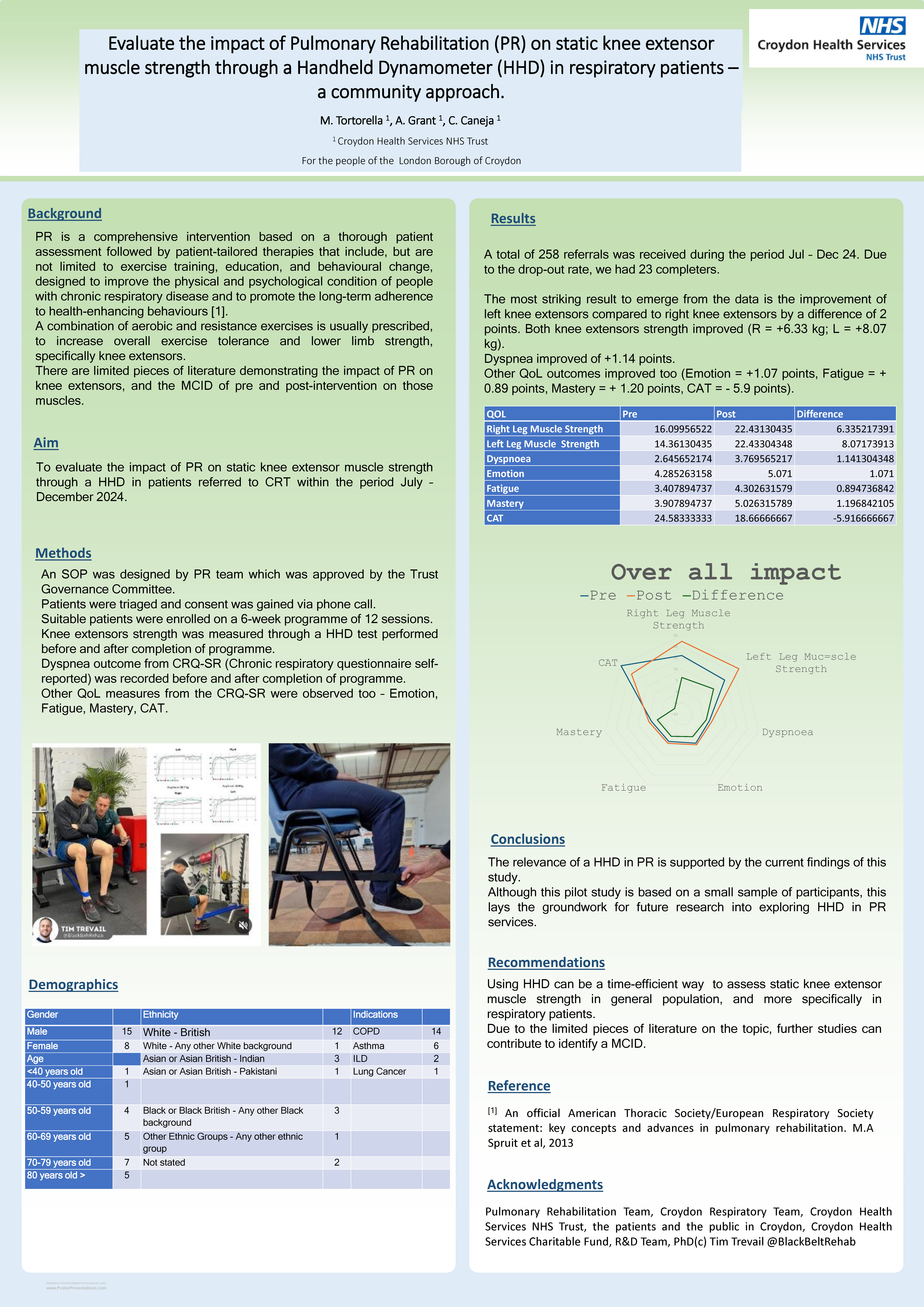Evaluate the impact of Pulmonary Rehabilitation on static knee extensor muscle strength through
a Handheld Dynamometer in respiratory patients - A community approach. (ID 640)
Croydon Health Services NHS Trust
Abstract
INTRODUCTION
Pulmonary Rehabilitation (PR) focuses on tailored physical exercise and information that helps people to better understand and manage their condition/s and symptoms, including feeling short of breath. It is a key intervention in the NHS Long Term Plan, providing PR within reach to the community [1].
Limited literature demonstrates the impact of PR on knee extensors and the MCID of pre- and post-intervention on those muscles.
Knee extensor strength can be assessed through an isotonic or an isometric test.
It’s desirable to find a time-effective and reproducible test which can be easily administered in any community rehabilitation centre.
AIM
To evaluate the impact of PR on static knee extensor muscle strength through a hand-held dynamometer (HHD) for respiratory patients referred to Croydon Integrated Respiratory Services.
METHODS
A HHD SOP was designed and approved by the Trust Governance Committee. Participants consented. The test was performed before and after completion of a 6-week PR programme of twelve sessions. Other QoL measures obtained from the CRQ-SR (Chronic Respiratory Questionnaire self-reported) were compared. The programme was delivered in four sites, including one hospital and one community gymnasium, and two community halls.
RESULTS:
A total of 258 patients were triaged, 170 attended the assessment, 158 started, thirty-five completed the programme and twenty-three had completed data.
Both legs showed improvement of +6.33 points for the right knee extensors and +8.07 for the left one.
Further analysis showed an improvement of dyspnoea of +1.14 points, Emotion +1.071, Fatigue +0.89, Mastery +1.19, CAT -5.91.
CONCLUSION:
HHD can easily be carried to those venues where performing an isotonic test is more difficult. It can be used safely and reliably with a vast number of patients.
The relevance of HHD in PR is supported by the current findings of this study.
Considering the small sample of participants, this lays the groundwork for future research into exploring HHD in PR services. The future of PR services can expand to the patient's home.
Reference
1. An official American Thoracic Society/European Respiratory Society statement: key concepts and advances in pulmonary rehabilitation. M.A Spruit et al, 2013
Funding: None
Conflicts of interest: None
 a Handheld Dynamometer in respiratory patients - A community approach. (ID 640)" />
a Handheld Dynamometer in respiratory patients - A community approach. (ID 640)" />